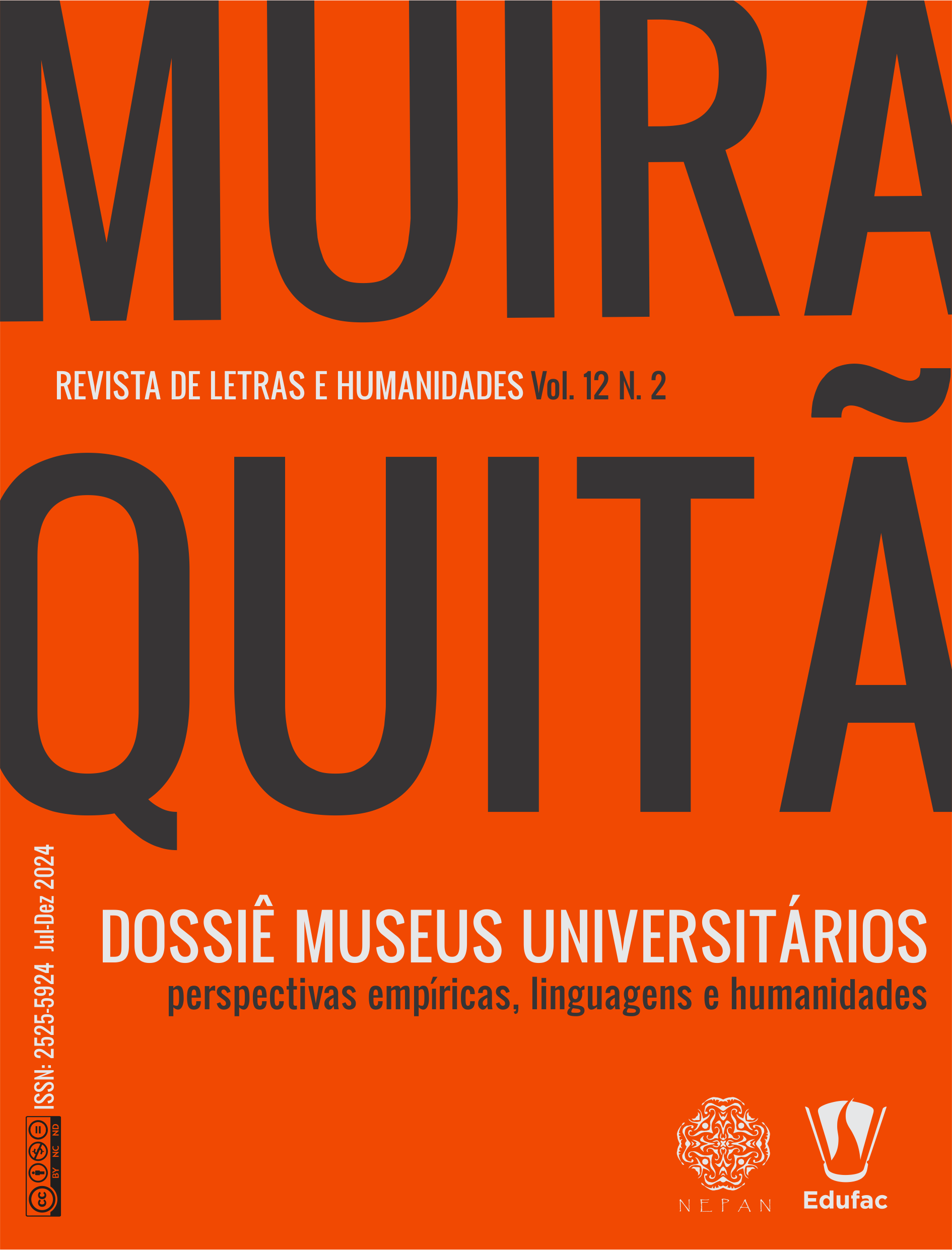Accessibility for people with visual impairment in brazilian virtual museums
an assessment
DOI:
https://doi.org/10.29327/210932.12.2-8Keywords:
Virtual museum. Accessibility. Digital. Visual Impairment.Abstract
Based on the difficulties encountered in physical museum exhibition environments by people with visual impairments, such as spatial mobility and the difficulty in perceiving the works on display, the digital space becomes a real possibility of accessing the various exhibitions held by museums. In the process of studying the ability of museums to have adequate accessibility to meet the needs of people with visual impairments in digital environments, it was mandatory to understand at what stage in this process Brazilian museums are. This study aims to provide quantitative and qualitative data that allows the assessment of this state of accessibility of national digital museum sites, which will make it possible to understand in a more assertive way the paths that can be adopted to better adapt to the current Brazilian legislation on accessibility in digital environments, making people with visual impairments participate in the museum exhibition, if not with exactly the same experience as a sighted person, but with similarities in sensations and perceptions of the works on display.Downloads
References
BRASIL. Lei Nº 11.904, de 14 de janeiro de 2009. Institui o Estatuto de Museus e dá outras providências. Brasília-DF, Diário Oficial da União, 2009.
BRASIL. IBRAM. (ed.). Museus em números. Brasília: Ibram, 2011. 240 p. Disponível em: https://antigo.museus.gov.br/wp-content/uploads/2019/06/museus_em_numeros_volume1-1.pdf. Acesso em: 10 abr. 2024.
COHEN, R.; DUARTE, C. e BRASILEIRO, A. Acessibilidade a Museus. Ministério da Cultura / Instituto Brasileiro de Museus. — Brasília–DF: MinC/Ibram, 2012.
CUNHA, M. N. B. da. Algumas considerações sobre museus digitais. In: SANSONE, Livio (org.). A política do intangível: museus e patrimônios em novas perspectivas. Bahia: Edufba, 2012. Cap. 10. p. 241–261. Disponível em: http://bibliotecavirtual.clacso.org.ar/Brasil/ceao-ufba/20130403100240/sansone.pdf. Acesso em: 19 jul. 2022.
GORI, M. et al. Shape Perception and Navigation in Blind Adults. Frontiers In Psychology. [S.L.], p. 1-12. 17 jan. 2017. Disponível em: https://www.frontiersin.org/articles/10.3389/fpsyg.2017.00010/full. Acesso em: 16 out. 2022
HENRIQUES, R. Memória, museologia e virtualidade: um estudo sobre o
Museu da Pessoa. Tese de Mestrado em Humanidades e Tecnologia, Universidade Lusófona de Humanidades e Tecnologia, Lisboa, 2004.
ICOM (International Council of Museums). Código de Ética - Versão Lusófona. 2009. Disponível em: http://icom.org.br/wp-content/themes/colorwaytheme/pdfs/codigo%20de%20etica/codigo_de_etica_lusofono_iii_2009.pdf. Acesso em: 08 dez. 2024.
INSTITUTO BRASILEIRO DE MUSEUS-IBRAM. Governo Federal (org.). Guia dos Museus Brasileiros. Brasília: Ministério da Cultura, 2011. 592 p. Disponível em: https://www.gov.br/museus/pt-br/centrais-de-conteudo/publicacoes//guia-dos-museus-brasileiros-extintos-incorporados-renomeados-implantacao-e-virtuais.pdf/view. Acesso em: 01 ago. 2022.
INSTITUTO DO PATRIMÔNIO HISTÓRICO E ARTÍSTICO NACIONAL. Instrução Normativa IPHAN n.º 1. 1 ed. Rio de Janeiro: Iphan, 2003. Disponível em: https://www.legisweb.com.br/legislacao/?id=75637. Acesso em: 24 set. 2020.
MONTEIRO, Simone Flores. Museus: núcleos de saberes e afetos. 2019. Disponível em:https://www.revistamuseu.com.br/site/br/artigos/18-de-maio/18-maio-2019/6515-museus-nucleos-de-saberes-e-afetos.html. Acesso em: 19 jan. 2022.
MUSEU DA PESSOA (Brasil) (ed.). Acessibilidade. Disponível em: https://museudapessoa.org/acessibilidade/. Acesso em: 10 abr. 2024.
ORGANIZAÇÃO MUNDIAL DA SAÚDE. Relatório mundial sobre a deficiência. 2019. Disponível em: https://www.who.int/disabilities/world_report/2011/report/en/. Acesso em: 11 set. 2020.
PORTUGAL. Decreto-Lei n.º 83, de 19 de outubro de 2018. Acessibilidade dos Sites da Internet e Aplicações Móveis do Setor Público. Portugal, Disponível em: https://diariodarepublica.pt/dr/detalhe/decreto-lei/83-2018-116734769. Acesso em: 10 abr. 2024
SANTOS, M. de S. S. A percepção espacial de pessoas com deficiência visual: estudo de caso em ambientes de restaurantes em João Pessoa-PB. 2015. f. 227. Dissertação (Mestrado)-Curso de Arquitetura e Urbanismo, Universidade Federal da Paraíba, João Pessoa, 2015. Disponível em: https://repositorio.ufpb.br/jspui/bitstream/tede/8400/2/arquivototal.pdf. Acesso em: 16 jun. 2022.
W3C (Usa) (ed.). Diretrizes de Acessibilidade para Conteúdo Web (WCAG) 2.0: recomendação w3c de 11 dezembro de 2008. Recomendação W3C de 11 dezembro de 2008. 2014. Disponível em: https://www.w3.org/Translations/WCAG20-pt-br/. Acesso em: 10 abr. 2024.
WATERCUTTER, A. (ed.). Virtual Gallery Shows Duchamp's Urinal and Everyone I Have Ever Slept With. 2012. Disponível em: https://www.wired.com/2012/10/virtual-gallery-of-lost-art/. Acesso em: 10 abr. 2024.
Downloads
Published
How to Cite
Issue
Section
License
Copyright (c) 2024 leonardo Carvalho, Hugo Nascimento, Vânia Oliveira

This work is licensed under a Creative Commons Attribution-NonCommercial-NoDerivatives 4.0 International License.

















